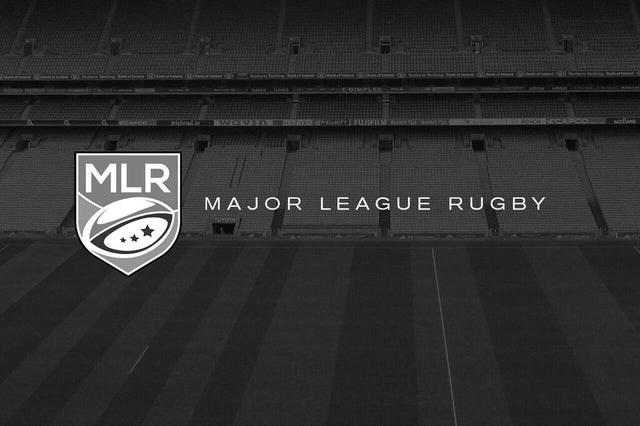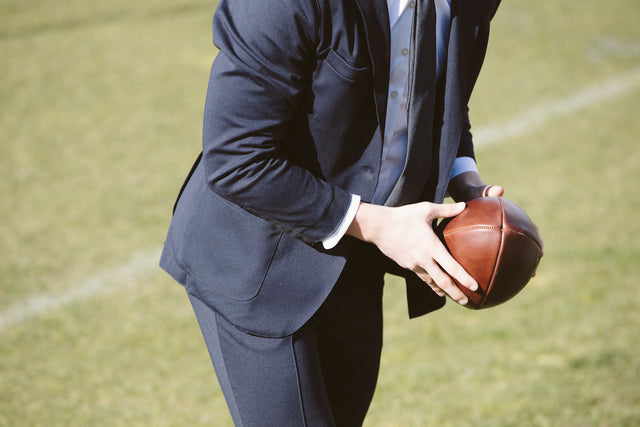A Good Product - Not Player Development - Needs to be the goal of Major League Rugby
On the precipice of the latest professional rugby league about to launch in the USA and Canada, fans are buoyant at the possibilities of what this will mean for the popularity of the sport in the mainstream public. Stinging from the failure of the one season of ProRugby in 2016, the optimism is palpable, primarily for the differences between Pro Rugby league owner Doug Schoninger and the seven franchises ready to battle in the Major League Rugby debut this weekend.
In Schoninger, there was one man who controlled the purse-strings and made a lot of promises to a lot of folks for it to ultimately go flat after six months. Vendors, some players, and league venues were all left wondering who was going to pay –and when. This also resulted in messy legal proceedings with USA rugby and frankly made a lot of prospective sponsors wince as they watched it all play out.
What you are getting in the MLR setup is a lot of existing rugby culture, and teams that have played together for years, coming together in a professional manner; complete with pay cheques, training, pre-season games, attractive stadia – and all owners have fronted up and put into trust $500,000 US each to ensure all obligations are met. That number should be encouraging, for it represents a pretty basic – but doable – budget. Savings will come in various ways. Teams flying in on the day of a game, for example, if the host city is less than a two-hour flight. Flying back the same night of a game where possible would also help alleviate hotel bills. All stuff that teams prior to the MLR were doing to make ends meet.
The seven teams already prepared to do battle are the Austin Elite, Houston SabreCats, San Diego Legion, Seattle Seawolves, Glendale Raptors, Utah Warriors, and New Orleans Gold. Rugby United New York is pencilled in for 2019, with part ownership coming from the highly visible JBL of WWF fame, while the Ontario Arrows have pieced together an impressive pre-season sampler platter for MLR officials to see they are serious; and Vancouver says they want in next year as well.
All that being said, what will make this league work, or not work is highly dependent on what teams set as targets. The one thing that could kill it is putting pressure on player development for the US and Canadian national teams. This is the first thing we hear when people complain about the standard of Canada and the Eagles vs the rest of the world. “We need a pro-domestic league and that will solve our lack of high performance in North America.”
If that is the main reason this league exists then they should stop before the opening drop-kick is issued in Houston this weekend.
What will make this league a success is what every other sport in North America does. They go for the best players they can afford at the position they need them the most, without worrying about picking a local kid, or an American kid or a Canadian kid at such-and-such a position. Baseball has done this exceedingly well for over 100 years. NHL, same thing. Connor McDavid is from Newmarket, Ontario. Think the oil rig worker from Leduc gives a flying fadoo about what a great development opportunity this is for Connor and the Canadian team? Nope. They want the best player in the country on the ice playing for their team. And if he stops being good, they go out and find another one.
 The by-product for the league can absolutely be an increased level of exposure for domestic-based players, but that shouldn’t be the main aim. The New Orleans Gold could have found some local front rowers and given them a chance, but instead, Canada’s Hubert Buydens and Eric Howard are leading the way, because they are among the best at what they do. That is the market working at its best.
The by-product for the league can absolutely be an increased level of exposure for domestic-based players, but that shouldn’t be the main aim. The New Orleans Gold could have found some local front rowers and given them a chance, but instead, Canada’s Hubert Buydens and Eric Howard are leading the way, because they are among the best at what they do. That is the market working at its best.
People need to be excited that their local team found a great player from Outer Timbucktoo, and not hear the kid that is starting was the best we had available in this market.
MLR has gotten TV sorted out, though finding the games will not be as easy as turning on your local cable package. There will be premium level packages in some cases, but the fact that games will be produced at a high level will make the sport very sellable to the local sports fan. There will be lots of opportunities to tell exciting back stories on the assembled teams and there will be a minor league charm to guys who moonlight as chiropractors playing in a game, but those will be stories we recall twenty years from now when we look back at how it all went.
The next levels take longer.
Local media engagement is key and tends to always be a problem area because reporters who know nothing about a sport will always write about the triple-A baseball team or the AHL hockey team because it is in their comfort zone. Just like sponsors need to be wooed, teams in each market need to target their best bet and spoon feed these folks and make them feel valued. Earned media, a term for what a sports team is able to produce through free media reports, is always more valuable than paid media, where the marketing department has to pay for radio, tv and print ads.
Way down the road is the final echelon. This where the NFL is at its best. They keep interest in their sport going 12 months a year, and a lot of that is down to the combine system and the draft. This gets the conversation going in a hundred markets where local college kids are taking their shot at the big league. I recently watched an NFL School visit day at the University of Southern California. The Trojans had so many quality kids that NFL scouts from around the country watched the whole gang of fourth-year students work out. It was covered with a seven-camera production, a five-person main desk, and field reporters. To watch players throw and catch the ball in shorts and a t-shirt. That is marketing genius. Get your fan thinking about a kid that is three years away from being a starter!
As for this weekend, the best thing that can happen is three close games and relatively clean games. Don’t let nervous mom’s first rub with rugby be the six o’clock highlights of the brawl at the local MLR game.
What do you think - drop me a line at doug.crosse@gmail.com and I will share your views in a recap piece later in the month!


